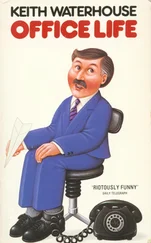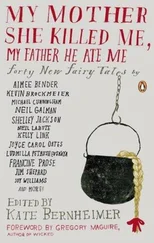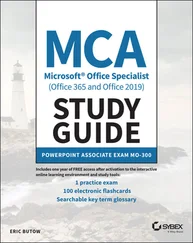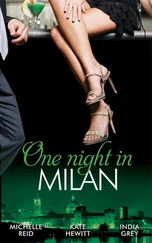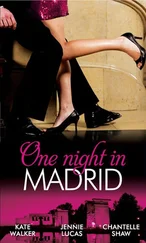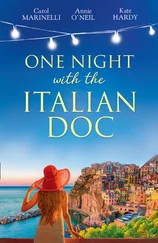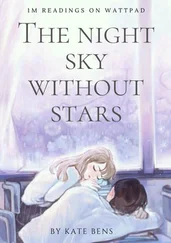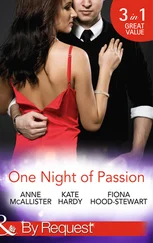Kate Bernheimer - Office at Night
Здесь есть возможность читать онлайн «Kate Bernheimer - Office at Night» весь текст электронной книги совершенно бесплатно (целиком полную версию без сокращений). В некоторых случаях можно слушать аудио, скачать через торрент в формате fb2 и присутствует краткое содержание. Год выпуска: 2014, Издательство: Coffee House Press, Жанр: Современная проза, на английском языке. Описание произведения, (предисловие) а так же отзывы посетителей доступны на портале библиотеки ЛибКат.
- Название:Office at Night
- Автор:
- Издательство:Coffee House Press
- Жанр:
- Год:2014
- ISBN:нет данных
- Рейтинг книги:3 / 5. Голосов: 1
-
Избранное:Добавить в избранное
- Отзывы:
-
Ваша оценка:
- 60
- 1
- 2
- 3
- 4
- 5
Office at Night: краткое содержание, описание и аннотация
Предлагаем к чтению аннотацию, описание, краткое содержание или предисловие (зависит от того, что написал сам автор книги «Office at Night»). Если вы не нашли необходимую информацию о книге — напишите в комментариях, мы постараемся отыскать её.
Office at Night — читать онлайн бесплатно полную книгу (весь текст) целиком
Ниже представлен текст книги, разбитый по страницам. Система сохранения места последней прочитанной страницы, позволяет с удобством читать онлайн бесплатно книгу «Office at Night», без необходимости каждый раз заново искать на чём Вы остановились. Поставьте закладку, и сможете в любой момент перейти на страницу, на которой закончили чтение.
Интервал:
Закладка:
LAIRD HUNT: I looked at the painting (a digital version provided by the Walker of said). Then I looked at the painting again. Then I looked at it some more. Then I covered up parts of it and looked at what was still there and what wasn’t. Then I looked at whatever marvelous ideas Kate was coming up with. Then I read up a bit on Hopper. Then I looked at the painting. Then I thought about an unfinished and abandoned manuscript of mine set partly in New York and partly in Hell’s Kitchen, in the twenties and thirties. Then I wrote. Then I looked some more. Then I wrote some more. Then I imagined I was standing just out of sight, perhaps beyond the open door, inside the painting. Then I looked at one of my daughter’s rather elaborate paint sets and the abandoned (or all but) easel we have in the back room. Then I wrote some more. Then I looked again.
CF: What method did you come up with in order to “collaborate,” and did you consider different options?
KB: Looking back at the hundreds of e-mails we’ve had about this project since its inception, I realize that very early on in the process we moved super naturally into a call-and-response form of composing the novella. The first words arrived on my desk on the evening of December 30 from Laird, who sent what he called “a start on the guy in the picture.” He wrote: “I’ve named him Chelikowsky, after a colleague of my father’s from the old days. Writing it, which starts with a kind of paranoia about the open window next to him, makes me realize: he is effectively frozen, a figure in a painting, an epic instance.” Laird also asked me if I knew the woman’s name, and mentioned that he thought she was a new hire. Soon after, I wrote the first passages for Hester’s narration — in which she sets forth some complaints about the new hire, Marge Quinn.
We collaborated via correspondence. Our many exchanges contained passages for the novella, letters to each other about the painting and the novella, and stuff about our personal lives outside of the painting (worlds colliding intensively for a couple of months). Amidst very intense discussions about the aesthetics and plot of the novella, we talked about things like Laird’s childhood in Singapore and my Chinese American daughter — who is the same age as Laird’s daughter — and sometimes we suggested cocktails to each other for the end of the workday. Bits of these personal exchanges made their way into the fiction. Even the subject lines of the e-mails became part of the story as it evolved: “Thus spake the file cabinet,” “Does Chelikowsky have a first name?” and “Hester (far from painting)” are three examples. Once we were exchanging letters and bits of fiction, we didn’t consider doing it any other way; questions, challenges, were built into the process, and I found the whole experience aesthetically thrilling. The call-and-response method challenged me technically in certain tangible ways, and it also gave me a new sense of freedom to put an idea in the story, trusting Laird would take it from there.
CF: Did you ever disagree about the direction of the story?
LH: The quick answer is no. The possibly more interesting answer is that we disagreed all the way through, but that disagreement took the happy form of writing into the collaborative, respectful freedom we had granted each other. Conversation is, after all, in its component parts, a kind of disagreement — a most interesting kind! And this was a conversation, to be sure.
CF: Were there any surprises along the way?
LH: There were so many surprises. Every time Kate sent a new section I was surprised in that best of all possible ways: seeing a first-rate writer galloping after her imaginings. And, of course, when you write the way I think we both do when we’re doing it solo, tending not to plan out the whole thing ahead of time, just the daily fact of writing is a constant surprise. Years ago, when I was a student at the Naropa Institute (now Naropa University), attending the Summer Writing Program, I went to a lecture by Michael Ondaatje, who was asked if he made a detailed outline before he wrote his novels. He said that although he knew that worked for some people, it absolutely killed the thing for him. Writing, to his way of thinking — and I’m grossly paraphrasing — was all about discovery, about surprise. A novel was a kind of great journey. Clearly you thought ahead, but you didn’t think all the way to the end. I had been banging my head against the whole you-must-plan-it-out thing and was sold on this approach.
In the context of Office at Night, I had no idea that the narrator of the first section I wrote would turn out to be the phone, or that the chair by the door would be paranoid and lascivious, or that there would be an abandoned, loquacious paintbrush in the back of the desk drawer or, as Kate dreamed up for us, the story would end with a dance. It was only in the editing stage, when Chris put a series of great questions to us, that the idea of a chorus of frame, canvas, and pigment came to me. New ideas bloomed up for Kate at that stage too. So it was surprise, surprise, surprise all the way through.
CF: How has your relationship to this painting changed over the course of your “residency” within it?
LH: No doubt I have been reading the wrong ekphrastic poetry and fiction, but I have almost always encountered a kind of distance in the result, often distance of a rather pious variety. Here I am standing mournfully — or at least soberly but intelligently — before the great work, and now here are my thoughts. . As I say, I have not read broadly enough! At any rate, the idea of inhabiting the painting with and through fiction was terribly attractive, and the playfulness with which we approached it made it possible, and even necessary, to spend a lot of time staring at odd details. At certain junctures, I actually found myself looking out into the room from different angles, as if I were sitting on the chair by the door, or leaning against the file cabinet, or leaning out the window. You come away from that kind of immersion colored — stained. I have always loved Hopper’s colors, so this is a happy state of affairs.
FUNDER ACKNOWLEDGMENTS
Coffee House Press is an independent, nonprofit literary publisher. Our books are made possible through the generous support of grants and gifts from many foundations, corporate giving programs, state and federal support, and through donations from individuals who believe in the transformational power of literature. Coffee House Press receives major operating support from Amazon; the Bush Foundation; the Jerome Foundation; National Endowment for the Arts, a federal agency; and from Target. This activity made possible by the voters of Minnesota through a Minnesota State Arts Board Operating Support grant, thanks to a legislative appropriation from the arts and cultural heritage fund, and a grant from the Wells Fargo Foundation Minnesota. Support for this title was received from the the McKnight Foundation.
Coffee House also receives support from: several anonymous donors; Suzanne Allen; Elmer L. and Eleanor J. Andersen Foundation; Mary & David Anderson Family Foundation; Around Town Agency; Patricia Beithon; Bill Berkson; the E. Thomas Binger and Rebecca Rand Fund of the Minneapolis Foundation; the Patrick and Aimee Butler Family Foundation; the Buuck Family Foundation; Claire Casey; Jane Dalrymple-Hollo; Ruth Dayton; Dorsey & Whitney, LLP; Mary Ebert and Paul Stembler; Chris Fischbach and Katie Dublinski; Fredrikson & Byron, P.A.; Katharine Freeman; Sally French; Jeffrey Hom; Carl and Heidi Horsch; Kenneth Kahn; Alex and Ada Katz; Stephen and Isabel Keating; the Kenneth Koch Literary Estate; Kathryn and Dean Koutsky; the Lenfestey Family Foundation; Carol and Aaron Mack; George Mack; Mary McDermid; Sjur Midness and Briar Andresen; the Nash Foundation; Peter and Jennifer Nelson; the Rehael Fund of the Minneapolis Foundation; Schwegman, Lundberg & Woessner, P.A.; Kiki Smith; Jeffrey Sugerman and Sarah Schultz; Nan Swid; Patricia Tilton; the Archie D. & Bertha H. Walker Foundation; Stu Wilson and Mel Barker; the Woessner Freeman Family Foundation; Margaret and Angus Wurtele; and many other generous individual donors.
Читать дальшеИнтервал:
Закладка:
Похожие книги на «Office at Night»
Представляем Вашему вниманию похожие книги на «Office at Night» списком для выбора. Мы отобрали схожую по названию и смыслу литературу в надежде предоставить читателям больше вариантов отыскать новые, интересные, ещё непрочитанные произведения.
Обсуждение, отзывы о книге «Office at Night» и просто собственные мнения читателей. Оставьте ваши комментарии, напишите, что Вы думаете о произведении, его смысле или главных героях. Укажите что конкретно понравилось, а что нет, и почему Вы так считаете.

